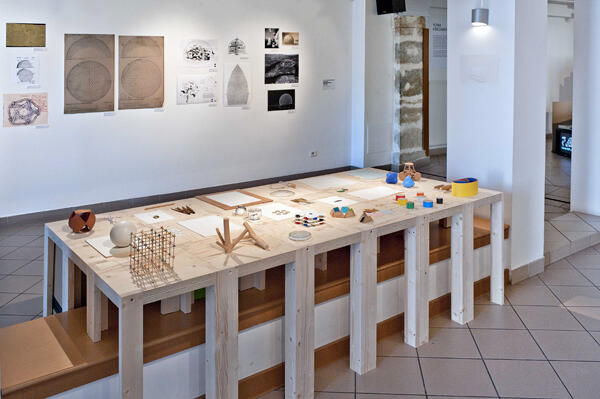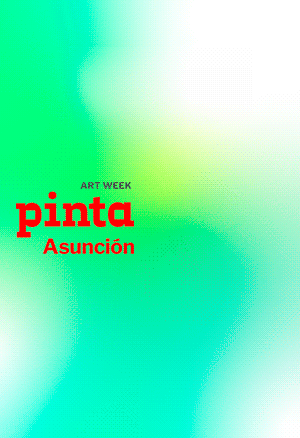Nicolas Paris
Between Drawing as Action and Drawing as Interaction
For many of the people who are part of the field of art, the first artistic project that Nicolás Paris publicly inscribed in the world was the book Doblefaz, published in 2008.

In this book, paper came to life and the spectators intervened in it actively and without inhibitions. The pages could be folded, and the spectator’s hands transformed him/her into a sort of narrator helping the images to find the bearings the project had designed for them, without however limiting their interpretative alternatives. This project had a strong impact on people in and outside the art world, because it revealed that a drawing, a book, a reader, or a spectator may be different from what they have always been. However, Doblefaz was not the beginning of Nicolás París’ creative work, but rather acted as a catalyst for experiences and processes that he had developed previously and that articulated with the particular characteristics of this project. When he presented the expositional version of Doblefaz, the grammars that had emerged in the book had to be restated in relation to the exhibition format and the category of “artwork”, fostering new relationships between his artistic work and what we might call the “artistic containers” in an attempt to assign a generic name to the spaces where art circulates in a public way.
At that time, he had already produced a large body of drawings that poetically and critically examined many of the conventions which have for centuries determined the conceptions of what an artistic image is. He had paid special attention to the category of illusion that had emerged as a consequence of the utilization of geometric perspective in the process of transferring the visual experience of the world to the field of artistic representation. He had also been a teacher in a rural school in southeastern Colombia, in an environment with a highly complex public order, as is the case of the municipality of La Macarena. This experience of orienting the formative process of a highly heterogeneous group – composed of children and youngsters of different ages – towards different fields and levels of knowledge (which is the modus operandi in rural schools) may have been a key factor in his understanding of art as a setting for cultural exchange. That experience gave rise to an editorial project called Cartilla del profesor,(A Teacher’s Primer), which is an interesting referent for approaching teaching in rural schools.
In later years he began to devise developments of these two experiences which converged in an artistic medium in itself, in which drawing as an exercise might be understood as the creative workshop, and the workshop space might be considered a process of drawing. In that order of ideas, his work as an artist has implied the appropriation of the conventional units that these two situations involve, and that render them assimilable to fixed concepts, finally to transpose them towards new forms of experience and more mobile and unstable conceptions.
His creative practices have a tendency to challenge they way in which the category of art is generally understood. In the first place, his works cannot be assimilated to the idea of object (epicenter of the notion of art in modern times that still persists as dominant conception in some social sectors), since they are often more closely associated to spatial and temporal situations involving the spectators. Besides, his works may resemble processes of formation, or the materials required for such processes, but they may also function as evidence of the way in which the creative activities are fuelled by exchange experiences among human beings. According to the previously described order of ideas, his works have their basis on the experience of the viewers, focusing their attention on the problems underlying the creative process, but they are initially perceived as spatiotemporal situations which might be considered site-specific exhibitions and interventions. This is true of both the pieces focusing on the articulation of drawings and objects within an installation displayed at a specific place, and of works in which pedagogical processes involving different groups of people are developed, works in which drawing becomes the path for collective experimentation.
These creative laboratories have explored different cultural conceptions associated to the field of drawing, which operates as a link between the participants, their own context and the notion of art. Within these types of projects, all the formal and material components that take part in drawing have been analyzed. Paris has reexamined the different options for understanding notions such as the contour or the line – as principles of drawing – and he has also addressed the conventions used to interpret space – from the plane or the physical surface of the support to the notion of illusory depth. He has also explored the basic tools or materials used for drawing, from the chairs, tables and utensils employed to the classroom itself.
In the artist’s classrooms, the sense of the exhibition space changes constantly, not only because of the types of actions that are usually performed in it, but because of the changing vocation of the material structures that constitute it. A similar characteristic may be found in the works in which the drawing or the objects play a leading role, and for which Nicolás Paris has conceived furniture that functions as a space in and of itself. This furniture is conceived from within as a container for the imaginary projections of the pieces, but from outside it is seen as a space contained by the architecture, or as a fold within it.
In his work Diagramas pedagógicos o arquitectura para pájaros ( Pedagogical diagrams or architecture for birds), the piece of furniture that contains the works has a strong effect on the architectonic logic of the place in which it is inserted, and it affects the experience which that place exerts on the spectators’ bodies. But when they approach the containing space, they are faced with the metaphors and projections of the images that carry them to other places and dimensions, different from the immediate context of the work.





